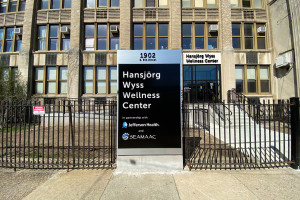Will Philly Women Hold More C-Suite Positions in 2020?
A Pennsylvania House resolution urges all businesses to increase the number of women on their boards by the end of the New Year, but a new report suggests this goal may be out of reach.

Getty Images | FangXiaNuo
Now in its 18th consecutive year, the latest Women in Leadership report highlights the slow but steady rise of women in C-Suite positions across the Philadelphia region between 2017 and 2018. The 2019 report, compiled by the Forum of Executive Women and PwC, collected data on the number of women in executive and board positions at Philadelphia’s top public companies.
While the report’s key finding is that the number of women in the C-Suite is on the rise, it’s been a painfully slow climb. Here are more findings from the report:
The Good
- 165 board seats were held by women in 2018, up from 149 in 2017 for a 1 percent increase.
- The report looked at women in politics, too. The number of women in the Pennsylvania House of Representatives rose from 20 percent in 2017 to 27 percent as of 2018, while the number of women in the State Senate rose from 14 percent to 26 percent in 2018. The report cited the 2018 state elections as “pivotal for women seeking elected offices.”
- Six more companies were added to the report’s Champions of Board Diversity list. At these companies, at least 30 percent of board seats were occupied by women. The newcomers include Destination Maternity Corp., Tabula Rasa HealthCare Inc., and BioTelemetry Inc.
The Bad
- According to the report, there were still 12 companies in the region — including Ditech Holding Corp., Gaming and Leisure Properties, Inc., and Lannett Co. — that had no board seats held by women between 2017 and 2018.
- The total number of female executives went down from 95 in 2017 to 94 in 2018.
- The percentage of “female top earners” at the region’s top companies remains at 10 percent, with no change between 2017 and 2018.
The Ugly
- About 9 percent of the region’s leading 100 companies had no women executives, women in board seats, and no “female top earners,” by the end of 2018.
- According to the report, CrossAmerica Partners, Falcon Mineral, inTEST Corp., J&J Snack Foods, Marlin Business Services, Mistras Group, Omega Flex, and RCM Technologies all had zero women across all C-Suite positions between 2017 and 2018.
In 2017, the Pennsylvania House of Representatives put forth a resolution urging all public, private, and non-profit organizations to increase the percentage of women on their board to 30 percent or more by the end of 2020.
But as we approach the new decade and with so many companies lagging behind, can the goal be met?
Lisa Detwiler, board president of the Forum of Executive Women, remains optimistic that the resolution will bring about some positive impact despite statistics that suggest the 2020 resolution may be out of reach.
“In 2018, 17 public companies had 30 percent or more women on their boards. This statistic was a significant jump from 12 companies in 2017, but it appears at this rate of change, we will not reach the 2020 goal,” said Detwiler. “What is promising is that more than two dozen additional companies are close to achieving the goal, so we are clearly picking up the pace of positive change.”


